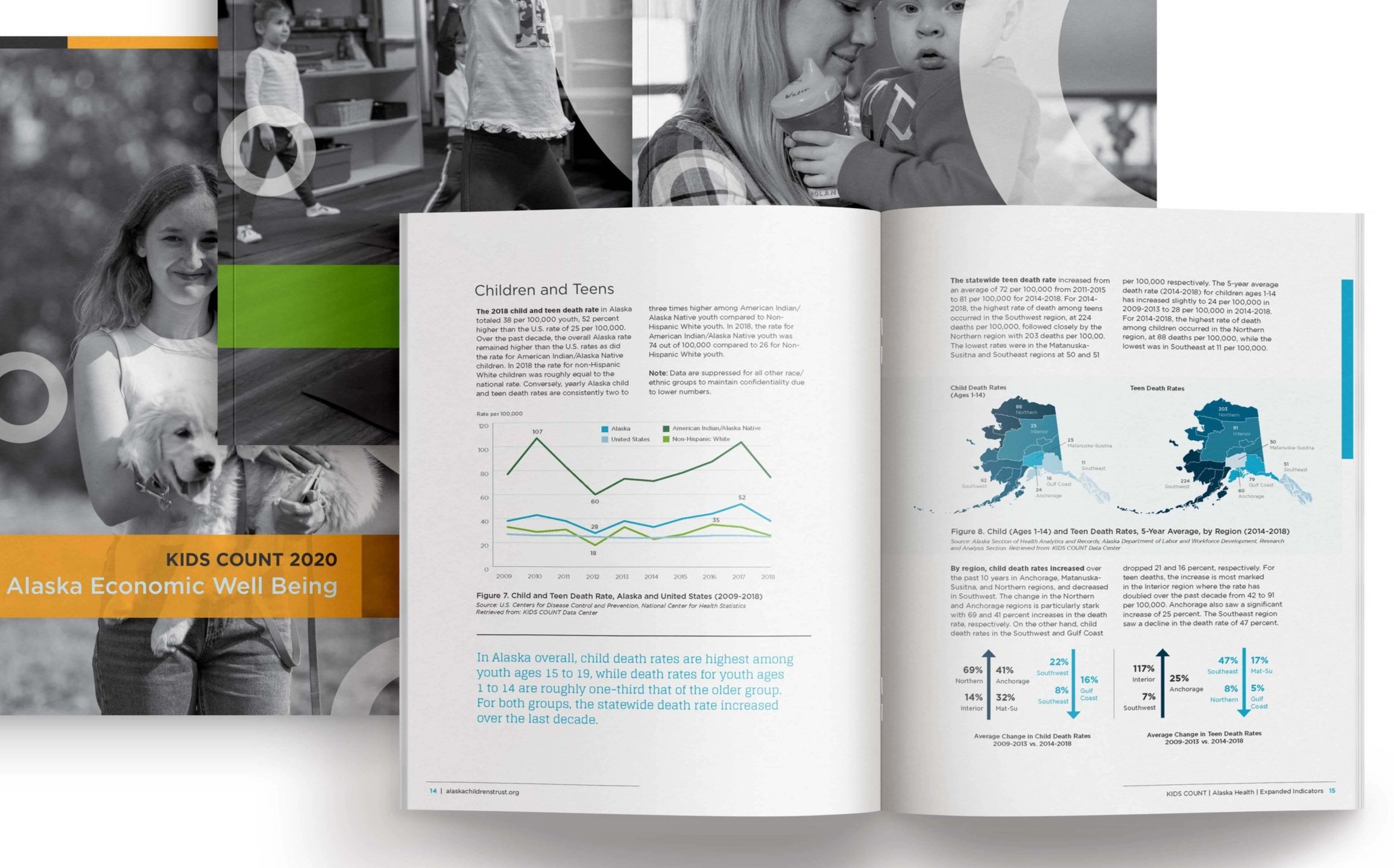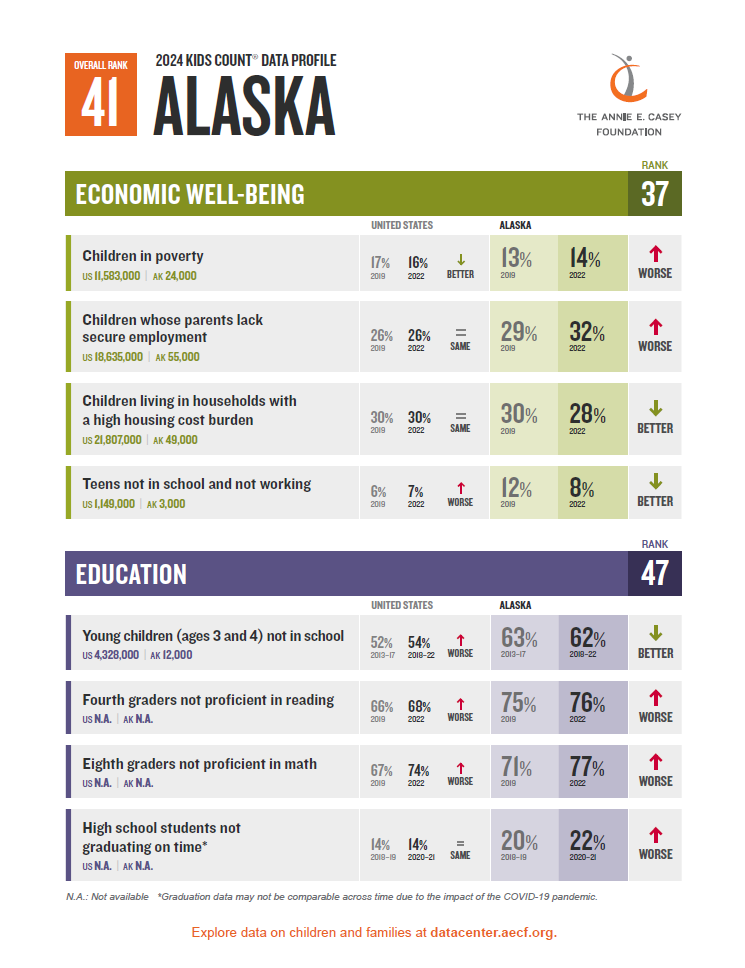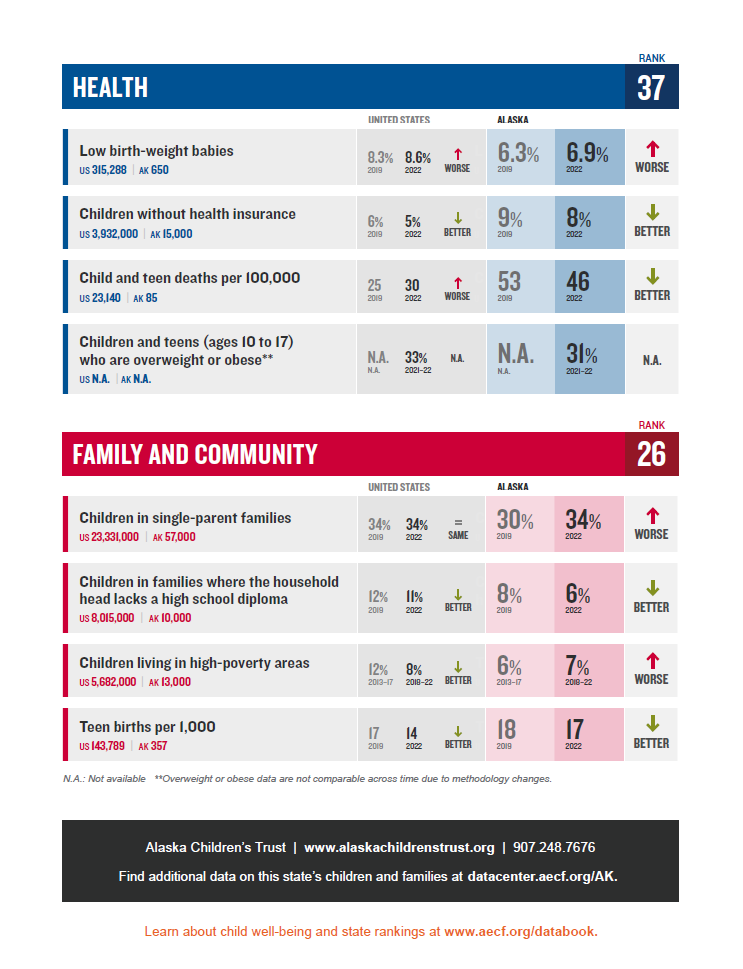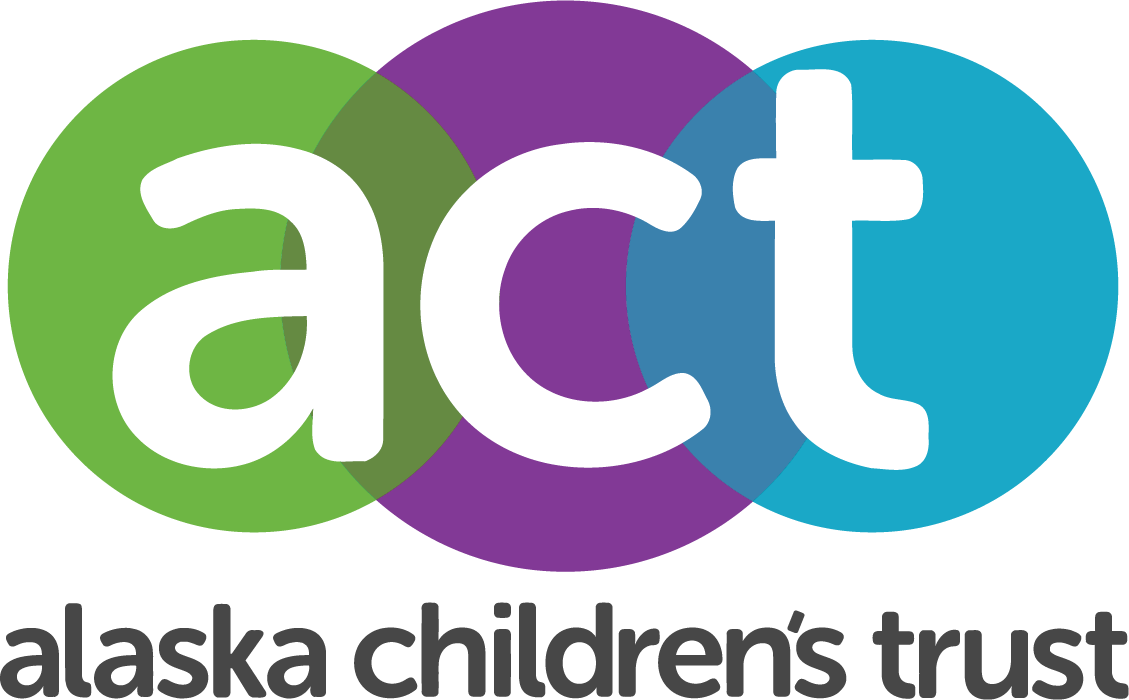
OUR WORK | RESEARCH & DATA
KIDS COUNT
KIDS COUNT is a national and state-by-state effort sponsored by the Annie E. Casey Foundation to track the well-being of children, youth, and families utilizing sound data.
The KIDS COUNT data books help answer the question:
How are Alaska’s children doing?
They focus on the key indicators of
Alaska Children’s Trust is focused on continually raising awareness of the needs and challenges of children, youth, and families throughout Alaska.
If you need assistance finding a piece of data or navigating or understanding the data you see here, please email us here.
KIDS COUNT Chat
Discover the Alaska Children’s Trust KIDS COUNT Chatbot! Our new AI-powered chatbot makes it easier than ever to explore key data about Alaska’s kids and families. Built using data from the Annie E. Casey Foundation’s KIDS COUNT Data Center, this tool helps answer your questions about child well-being in Alaska—covering topics like economic stability, education, health, and more.
Whether you're a policymaker, reporter, advocate, or curious community member, the KIDS COUNT Chatbot provides quick, easy access to trusted data that informs efforts to improve outcomes for children across our state.
Try it today and explore how Alaska’s kids are doing—and where we can work together to create positive change. Access the bot at https://chat.alaskachildrenstrust.org/
40th
In the 2025 KIDS COUNT Data Books, Alaska ranked 40th in the nation in overall child well-being.
KIDS COUNT
KIDS COUNT is a national and state-by-state effort sponsored by the Annie E. Casey Foundation to track the well-being of children, youth, and families utilizing sound data.
2025 Alaska Data and State Profile
– 2025 KIDS COUNT Data Book
– 2025 KIDS COUNT State Profile
Interactive KIDS COUNT Data Dashboard
As Alaska’s KIDS COUNT affiliate, the Alaska Children’s Trust publishes an expanded KIDS COUNT data profile specific to Alaska every other year. The data presented below utilizes demographic information centered around race and ethnicity, to better understand disparities and inequities affecting children across key areas like education, health, economic well-being, and family/community context.
Using demographic data helps illuminate inequities that exist among different racial and ethnic groups as well as the unique challenges that arise from intersectionality with other factors such as income level, family structure, and geographic location. By disaggregating data by race and ethnicity, KIDS COUNT can highlight which communities face greater challenges and barriers. This approach highlights where challenges like limited access to quality education, high poverty rates, high housing cost, or poor health outcomes are most pronounced. Identifying these disparities enables us to design targeted interventions that address the unique needs of Alaska’s children and families, ensuring that every child has the opportunity to thrive.
Education
Children (ages 3-4) Not in School
Fourth Graders Not Proficient in Reading
Eighth Graders Not Proficient in Math
High School Students Not Graduating on Time
Health
Low Birth Weight Babies
Children Without Health Insurance
Child and Teen Death Rate
Children (Ages 10-17) Overweight or Obese
Economic Well-being
Children in Poverty
Children Whose Parents Lack Secure Employment
Children in High Housing Cost Burden Households
Teens Not in School and Not Working
Family & Community
Children in Single-Parent Families
Children in Households Without a High School Diploma
Children Living in High-Poverty Areas
Teen (Ages 15-19) Birth Rate (per 1,000)


























